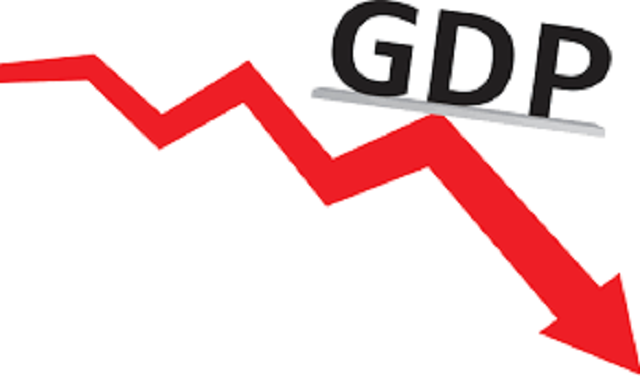Japan’s economy has been facing a steady decline in recent years, with its GDP contracting for the second consecutive quarter in the last three months of 2023, signaling a technical recession. The country has also lost its status as the world’s third-largest economy, falling behind Germany in dollar terms.Several factors contribute to Japan’s economic woes, including demographic challenges, stagnant wages, weak domestic consumption, declining exports, historical economic stagnation, natural disasters, and policy and structural issues.
Demographic Challenges
Japan’s population is aging and shrinking, which has significant economic implications. A smaller workforce reduces overall productivity and economic output, while an aging population increases the burden on social security systems and healthcare, straining public finances.
Stagnant Wages and Low Domestic Consumption
Stagnating wages have led to reduced consumer spending, as households are reluctant to spend due to uncertain economic prospects and higher living costs, exacerbated by a weaker yen. This has resulted in a decline in private consumption, which constitutes a significant portion of Japan’s GDP.
Trade and External Demand
Japan’s trade deficit has widened due to a persistent decline in exports, particularly in IT-related goods, and a slowdown in the Chinese economy. This has negatively impacted industrial production and overall economic growth. Additionally, global economic uncertainties and trade protectionism, especially involving the US, have further strained Japan’s export-dependent economy.
Historical Economic Stagnation
Japan has experienced prolonged periods of economic stagnation, often referred to as the “Lost Decades.” Following the burst of the asset bubble in the early 1990s, Japan’s economy has struggled with low growth, deflation, and financial instability.
Natural Disasters and External Shocks
Recent natural disasters, such as earthquakes, have also disrupted economic activities and consumer spending. These events tend to exacerbate existing economic vulnerabilities by causing immediate disruptions and long-term economic costs.
Policy and Structural Issues
Japan’s economic policies, including prolonged negative interest rates, have had mixed results. While they have aimed to stimulate growth, they have also led to unintended consequences such as reduced bank profitability and limited monetary policy flexibility. Structural issues such as low productivity growth and a lack of significant economic reforms have also hindered economic recovery.In summary, Japan’s GDP decline is a result of demographic challenges, stagnant wages, weak domestic consumption, declining exports, historical economic stagnation, natural disasters, and policy and structural issues. These factors collectively contribute to the ongoing economic difficulties faced by the country.
What are the primary factors contributing to Japan’s declining GDP
The primary factors contributing to Japan’s declining GDP are:
1. Demographic Challenges
Japan’s population is aging and shrinking, with a rising proportion of elderly people and a declining younger generation. This results in a diminishing working population, reduced productivity, and increased burden on social security systems and healthcare.
2. Stagnant Wages and Weak Domestic Consumption
Stagnating wages have led to reduced consumer spending, as households are reluctant to spend due to uncertain economic prospects and higher living costs, exacerbated by a weaker yen. This has resulted in a decline in private consumption, which accounts for more than half of Japan’s GDP.
3. Declining Exports and Trade Deficits
Japan’s trade deficit has widened due to a persistent decline in exports, particularly in IT-related goods, and a slowdown in the Chinese economy. Lower external demand has negatively impacted industrial production and overall economic growth.
4. Historical Economic Stagnation
Japan has experienced prolonged periods of economic stagnation, often referred to as the “Lost Decades,” following the burst of the asset bubble in the early 1990s. The country has struggled with low growth, deflation, and financial instability since then.
5. Natural Disasters and External Shocks
Recent natural disasters, such as earthquakes, have disrupted economic activities and consumer spending, exacerbating existing economic vulnerabilities.
6. Policy and Structural Issues
Japan’s economic policies, including prolonged negative interest rates, have had mixed results, leading to unintended consequences such as reduced bank profitability and limited monetary policy flexibility. Structural issues such as low productivity growth and a lack of significant economic reforms have also hindered economic recovery.These factors collectively contribute to Japan’s declining GDP, with the country experiencing a technical recession in the last quarter of 2023 and losing its status as the world’s third-largest economy to Germany.
FAQ
What is Japan’s GDP growth rate?
As of the first quarter of 2024, Japan’s annual GDP growth rate stood at a negative 0.2 percent compared to the same period one year prior, indicating a slight contraction in the country’s GDP.
How big is Japan’s economy?
As of 2024, Japan boasts the world’s fourth-largest economy, behind the United States, China, and Germany. The country’s economy is characterized by a strong manufacturing sector and exports.
What is Japan’s Lost Generation?
The “Lost Generation” is a concept closely related to Japan’s Lost Decades. It refers to those Japanese university graduates who entered the economy during the employment freezes characteristic of the Lost Decades, primarily including people who graduated in the 1990s and 2000s. As a consequence, members of the Lost Generation may have had to take on low-wage temporary work over stable employment with robust retirement benefits, potentially leading to a pension crisis for the nation.
Comparison of Japan’s GDP Ranking and Growth Rate
| Year | GDP Ranking | GDP Growth Rate |
|---|---|---|
| 2023 | 4th | 1.9% |
| 2024 | 4th | -0.2% |

